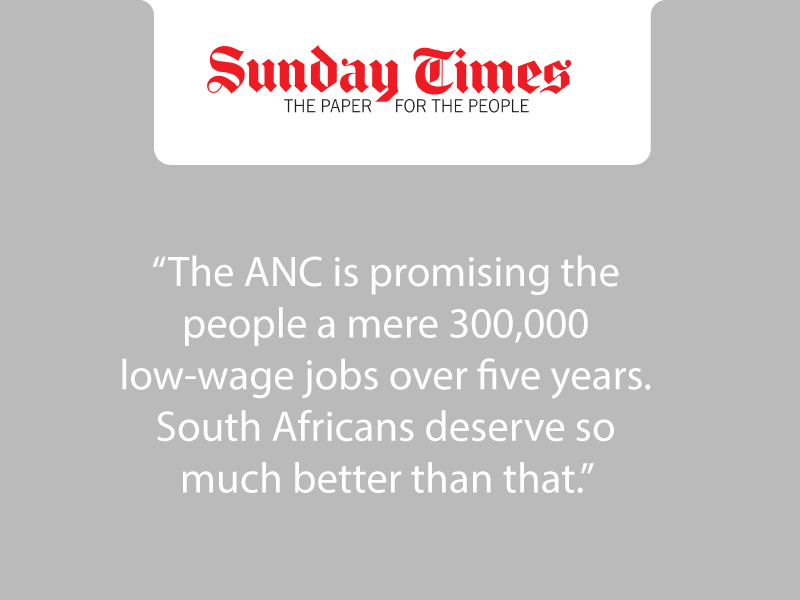
SA HAS embarked on an expensive and challenging programme of healthcare reform that presents opportunities and risks for the public and private health sectors. The government hopes, over the next 14 years, to achieve universal access to quality healthcare. There is no doubt this is an urgent challenge that must be undertaken.
Falling health indicators point to a crisis that developed in the 1990s and 2000s, partly due to HIV/AIDS and the government’s flawed responses to it. The main elements of this crisis are a public healthcare sector so badly managed that its performance is very poor and a private sector that serves its customers well but at prices that ensure only a minority can gain access to it.
The co-existence between these two sectors is the most contentious aspect of the health-reform debate. There is a widespread tendency to blame the private sector for the ills of the public and to challenge the legitimacy of private health provision.
Constructive debate about how best to manage the country’s healthcare assets has also been impeded by misconceptions about whom the private sector serves and who works in the sector. The drivers of prices of healthcare and the extent of redistributive cross-subsidisation in funding public healthcare are also poorly understood.
One benefit of the National Health Insurance (NHI) debate has been more rigorous research on how resources for healthcare are distributed. As a result, we can note that the private sector:
- serves more than just medical scheme members: up to 35% of the population, if out- of-pocket payments are included;
- has significantly smaller human resources than its critics claim;
- reduces the burden on the public health sector and has less “excess capacity” than is often claimed; and
- faces input costs and barriers to market activity which, rather than “greed”, is what drives up prices.
This information offers a clearer perspective on the potential contribution of a reformed private sector to broadening access to private healthcare at lower prices.
Reform of the private healthcare sector is an essential complement to the challenge of rehabilitating public-sector healthcare, which is poorly managed at the strategic level and often at the point of service. The essential public-sector reform is to deliver on President Jacob Zuma’s pledge in the state of the nation speech to appoint qualified people to manage the public health sector. This is a minimum requirement for all other reforms, and without it the NHI will merely waste resources. Other critical initiatives include expanding training of doctors, a vigorous overseas recruitment campaign, and extending private- sector involvement in medical training.
The size of this challenge is enormous. Public-sector healthcare accounts for more than 14% of government spending and, with a promised rise in resources for health spending, this will increase. The sector employs more than 250000 people and this number, too, will increase. At least one in 34 employees in the formal sector of SA’s economy and more than one in five public-sector employees work in public-sector healthcare.
Launching the green paper on the NHI in August, Health Minister Aaron Motsoaledi said the intent was to draw on the strengths of the public and private health sectors to better serve the public. How can this be done in respect of the private sector?
Based on our research and consultations with health stakeholders, our proposals for mobilising private-sector resources fall into two broad categories. First, facilitate the private sector’s direct contribution to the rehabilitation of the public sector. Among the possibilities are to restore and promote opportunities for private-sector specialists to work in the public sector. Support could also be mobilised by extending public-private partnerships from infrastructure provision, where they are already encouraged, to hospital management, supply chain management and clinical services. The principle of public-private co-operation should extend to the development of joint human-resource planning and the facilitation of training of health professionals by the private sector through amending current regulation.
Second, broaden access to quality care by extending the reach of private insurance coverage. Reforms will have to contain costs by helping markets work more efficiently. The following reforms would address the problem of high prices by allowing markets to work more effectively.
Private hospitals cannot employ doctors and so have to compete with each other to attract them. They do this by investing in facilities and equipment in excess of objective needs. This drives up prices and encourages a focus on specialised and hospital-based care over prevention and primary care. The existing fee-for-service funding framework provides little incentive to compete on price or innovate in delivery. All of this needs to change. Private entities should be allowed to employ doctors.
All regulated processes connected with health should be simplified and their administration made as transparent as possible. Details of applications, decisions and time lines should be made public. Competition should be encouraged, not stifled by bureaucracy, corruption and antimarket ideology.
Increased competition in private healthcare could be achieved by allowing low-cost healthcare companies from outside SA to operate here.
The publication of price lists for medical services should be mandatory.
This, combined with funding models that allow individuals to benefit from prudent expenditure, will encourage shopping around in nonemergency cases.
The private sector should be encouraged to operate a wider range of facilities, including lower-cost ones focused on primary care, such as day surgeries and outpatient facilities, with a greater role for general practitioners and nurses.
Drastic steps should be taken to increase the supply of medical professionals through the same mixture of immigration and public- private partnerships in training as proposed for the public sector. This will reduce the scarcity value of doctors, which helps drive price increases in the private sector.
If SA is to meet Motsoaledi’s challenge to use the strengths of the private sector, attitudes to private healthcare will have to change in a fundamental way, reflecting a genuine commitment to market forces and private entrepreneurs.
We also have to recognise the imperfections of the market in which SA’s private sector operates. Reforms are required so that the private sector can operate more efficiently, encouraging new players and facilities at a wider range of affordability, thus broadening access to its services.
The goal of government plans for healthcare reform is universal access to quality care. Finding the resources for this is an enormous task when only 41% of the working-age population participates in the formal economy. The challenge can be met only by managing resources much better. The essential purpose of our proposals is to change the conversation about the contribution a reformed private healthcare sector can make to help meet this national imperative.
- Ann Bernstein is executive director of the Centre for Development and Enterprise (CDE); Sandy Johnston is a senior associate at CDE. This article is based on a new CDE report: Reforming Healthcare: What role for the private sector?
Photo credit: rawpixel.com from Pexels




